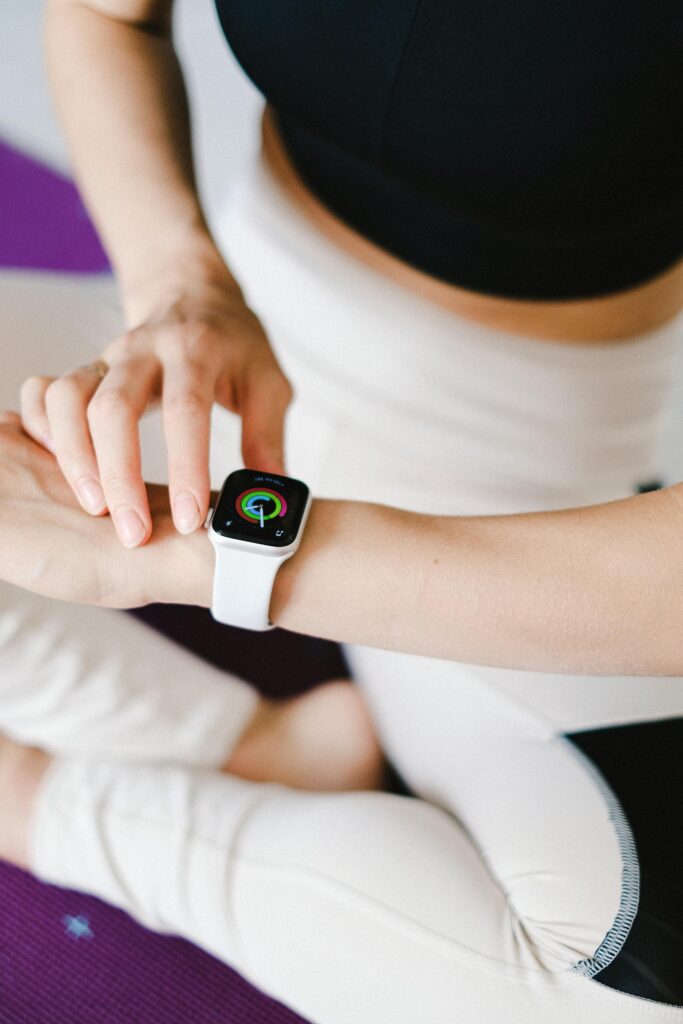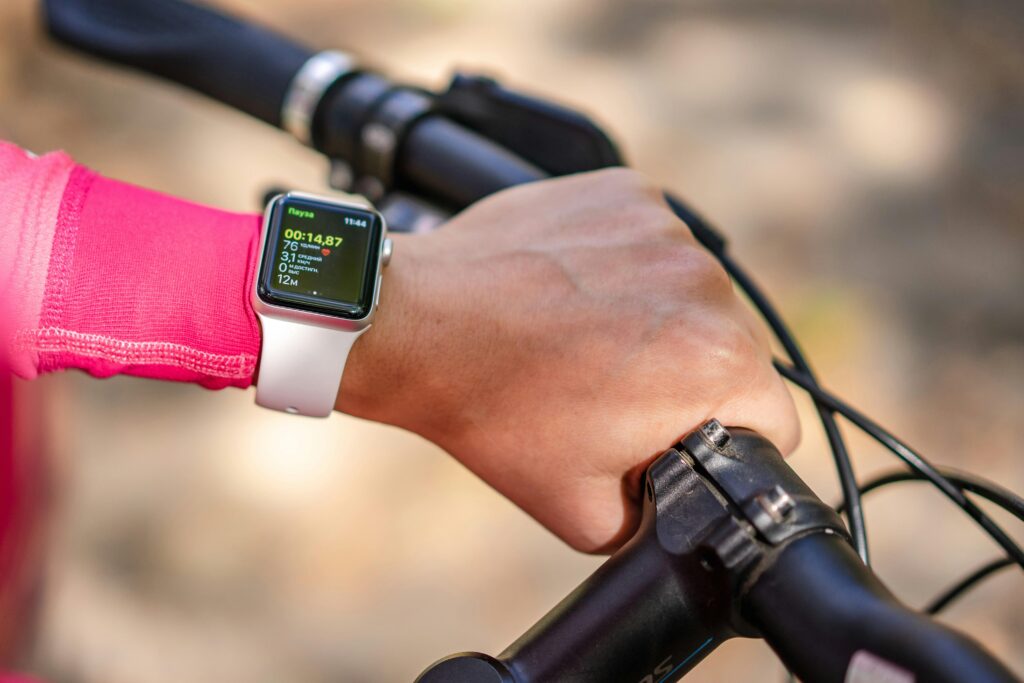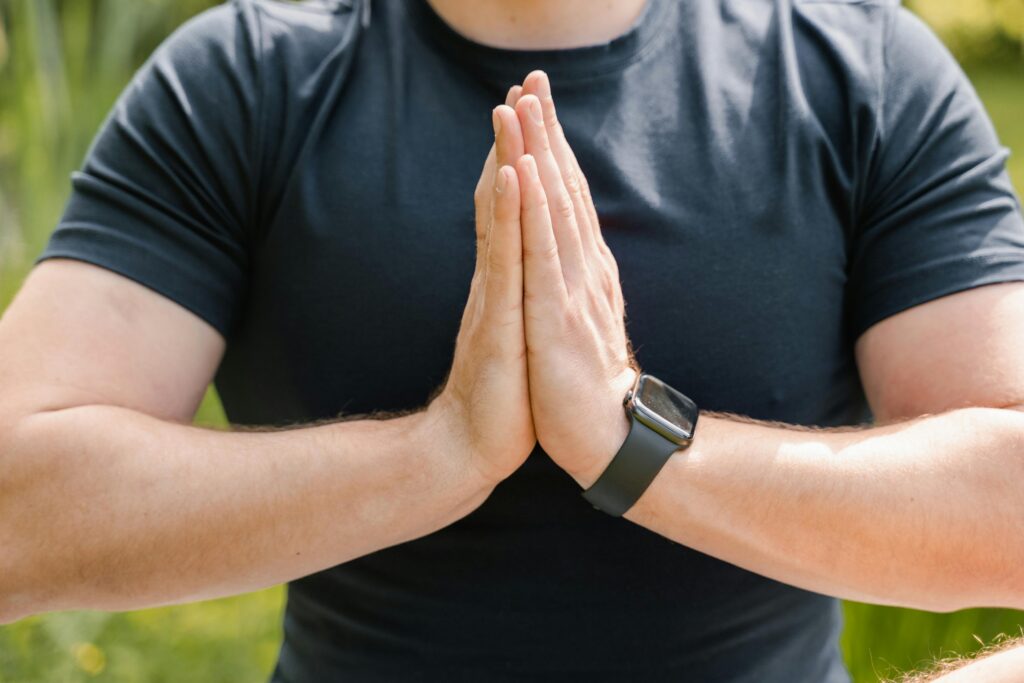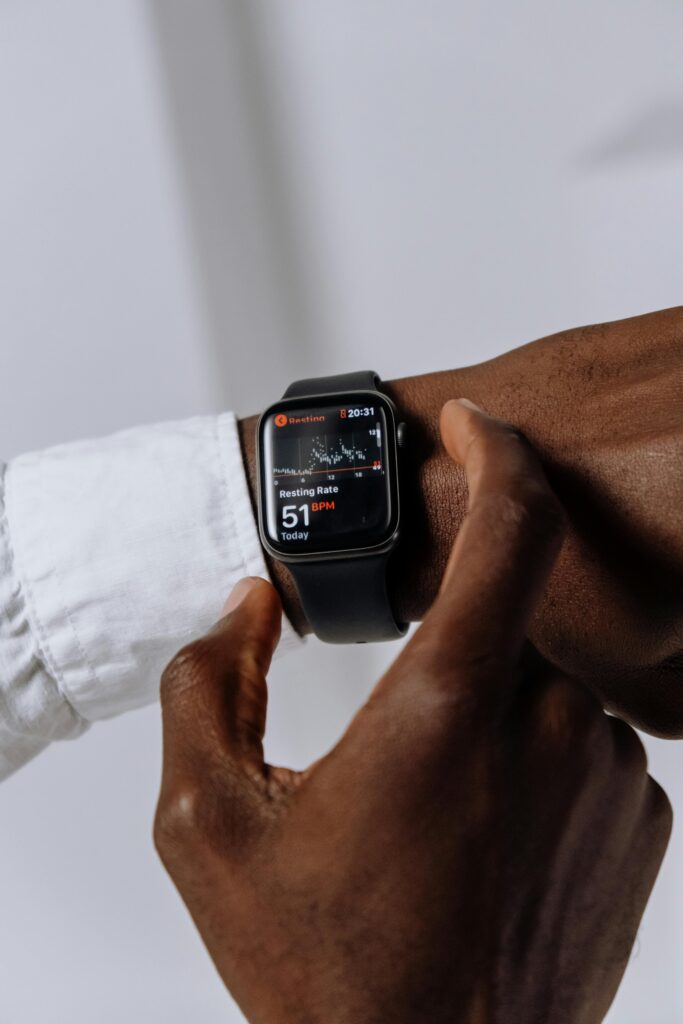🏃♂️ Best Fitness Trackers of 2025: Fitbit, Apple, Whoop & More Compared
Finding the best fitness trackers of 2025 isn’t just about counting steps anymore — it’s about choosing a wearable that truly complements your lifestyle. With advancements in health tech and smart features, today’s fitness wearables can track everything from your sleep quality to your stress levels, even offering personalized coaching powered by AI.
As the competition grows fiercer each year, 2025 has brought us a fresh wave of innovative trackers from brands like Fitbit, Apple, Whoop, Garmin, and more. But with so many options available, it can be overwhelming to decide which device is worth your time — and your money.
In this guide, we’ll explore and compare the top fitness trackers of 2025, breaking down their unique strengths, features, and pricing. Whether you’re a professional athlete or simply aiming to close your daily rings, you’ll find the right device for your goals here. Let’s dive into the details and see which wearable deserves a spot on your wrist this year.
🧭 How to Choose the Best Fitness Tracker in 2025 for Your Needs:

🧠 What to Look for in a 2025 Fitness Tracker
🛠️ What Makes a Fitness Tracker Great in 2025?:
Before diving into comparisons, it’s essential to understand what separates the best fitness trackers of 2025 from older generations. Thanks to rapid innovation, these devices now go far beyond basic step counting. Here’s what matters most this year:
1. 📊 Advanced Health Metrics
Modern trackers offer a comprehensive look into your wellness. Expect continuous heart rate monitoring, blood oxygen saturation (SpO2), sleep cycle analysis, and even electrodermal activity for stress detection. Some models also include ECG scans and menstrual health tracking, making them more personalized than ever.
2. 💡 Smarter AI Insights
AI integration is transforming fitness wearables. Devices like the Whoop 5.0 and Fitbit Sense 3 now use machine learning to provide tailored recommendations, such as when to rest, how intensely to train, or how to improve your sleep hygiene — all based on your real-time data.
3. 🔋 Battery Life on the Best Fitness Trackers of 2025 Compared
Another big factor is battery life. While Apple’s fitness-focused wearables offer about 18 hours, others like Garmin and Whoop can stretch to 7 days or more. Quick-charging technology is also becoming more standard, which is especially useful for busy users.
4. 🔌 App Ecosystem and Compatibility
Ultimately, the software experience can make or break your decision. The best fitness trackers of 2025 are backed by robust apps that allow detailed health visualization, third-party integrations (like Apple Health or Google Fit), and even social competition features for motivation.

🏆 Best Fitness Trackers of 2025 (Side-by-Side Breakdown)
📱 Comparing Fitness Trackers Based on App Support: Are the Best Fitness Trackers of 2025 Compatible with Your Phone?
Now that you know what to look for, let’s explore the top fitness trackers of 2025 and how they stack up against each other. Whether you’re into cardio, weight training, or just getting your steps in — there’s a perfect device for you.
🛌 Best Fitness Trackers of 2025 for Sleep Tracking:
🧬 Fitbit Charge 6
Best for: All-round health tracking with excellent value.
-
Key Features: ECG, skin temperature sensor, stress management, and sleep score tracking.
-
Battery Life: Up to 7 days.
-
App: Clean and easy to use with Google Fit integration.
-
Why it stands out: Fitbit continues to shine with a well-balanced blend of usability, affordability, and deep wellness insights.
🍏 Apple Watch Series 9
Best for: iPhone users who want a smart assistant on their wrist.
-
Key Features: Double Tap gesture, blood oxygen sensor, cycle tracking, and crash detection.
-
Battery Life: Up to 18 hours (36 hours in Low Power Mode).
-
App: Deeply integrated with iOS, Apple Health, and third-party apps.
-
Why it stands out: While it’s not the longest-lasting, it offers unmatched ecosystem synergy and polished features.
Learn more about the Apple Watch Series 9 and its latest health-tracking features directly from the source.
🏆 Best Fitness Trackers of 2025 for Runners:
🧠 Whoop 5.0
Best for: Serious athletes and biohackers.
-
Key Features: Continuous heart rate, strain coach, recovery tracking, and no screen (app-based).
-
Battery Life: 4–5 days with wearable charging.
-
App: Focused on performance and strain recovery with daily readiness scores.
-
Why it stands out: No distractions — just data. Whoop helps you listen to your body with lab-level precision.
🏃 Garmin Vivosmart 5
Best for: Runners and outdoor fitness enthusiasts.
-
Key Features: GPS, body battery energy monitor, hydration tracking, and heart rate zones.
-
Battery Life: 7 days.
-
App: Garmin Connect offers in-depth stats with workout analytics.
-
Why it stands out: Built for endurance and outdoor activity with pro-grade tracking accuracy.

🥊 Fitbit vs Apple Watch: Health Tracking Showdown
When it comes to health tracking, Fitbit and Apple continue to lead the charge in 2025. However, despite both being excellent choices, they serve slightly different purposes — and your ideal pick will depend heavily on your daily routine and long-term fitness goals.
📈 Fitbit Charge 6: Wellness-Focused & Insight-Driven
Fitbit is ideal for users who prioritize holistic health tracking and long battery life. It’s especially well-suited for wellness-focused individuals who want gentle reminders, long-term metrics, and stress management tools baked into the experience.
Why Choose Fitbit:
-
🧘♂️ Built-in EDA sensor for stress tracking and guided breathing
-
💤 Advanced sleep stages with Sleep Score
-
🩺 SpO2, skin temperature, and ECG monitoring
-
🔋 Up to 7 days of battery life — great for overnight wear
-
🤖 Smart suggestions via Fitbit Premium based on trends
🍎 Apple Watch Series 9: Smart, Seamless, and Feature-Packed
On the flip side, Apple Watch leans toward the tech-savvy lifestyle user who wants it all — fitness tracking, productivity, safety, and deep integration with iOS. While its battery life is shorter, the real-time responsiveness and Apple ecosystem are unmatched.
Why Choose Apple Watch:
-
📲 Seamless iPhone integration, including Siri and Apple Pay
-
🩸 Advanced health tools like ECG, blood oxygen, and temperature tracking
-
🧠 AI-powered suggestions via the Fitness+ platform
-
⛑️ Emergency SOS, crash detection, and fall alerts
-
⚡ Quick charging to 80% in just 45 minutes
If you’re also upgrading your smartphone soon, check out our Samsung Galaxy S24 Ultra Review for the best pairing options.

🆚 Fitbit vs Apple Watch: Health Tracking Showdown
When it comes to health tracking, both Fitbit and Apple have come a long way — but they take very different approaches.
🏆 Why the Best Fitness Trackers of 2025 Are Worth the Hype:
🩺 Health Metrics and Accuracy
-
Fitbit Charge 6 focuses on holistic wellness. It provides continuous heart rate monitoring, skin temperature trends, blood oxygen levels, and even ECG scans for heart rhythm detection.
-
Apple Watch Series 9, meanwhile, brings a more medical-grade feel with high-accuracy ECG, SpO2, and advanced cycle tracking. It even detects irregular heart rhythms and prompts users to take action.
✅ Verdict: Fitbit offers more in-depth wellness scores over time, while Apple prioritizes clinical-grade readings and proactive alerts.
📱 Smart Features Beyond Fitness
-
Fitbit’s software is more health-centered — it focuses on recovery, stress management, and habit building. However, it lacks the “smartwatch feel.”
-
Apple Watch Series 9 includes everything from answering calls to accessing Siri, controlling smart home devices, and using third-party apps on the wrist.
✅ Verdict: If you want a fitness tracker that doubles as a productivity tool, Apple wins. But if your priority is recovery and stress balance, Fitbit might be the better fit.

⚔️ Whoop vs Garmin: Best Fitness Trackers of 2025 for Performance
When it comes to pushing your physical limits, Garmin and Whoop stand out as two of the best fitness trackers of 2025. While their target audiences overlap slightly, their tracking philosophies couldn’t be more different.
🔬 Data-Driven Recovery vs. Actionable Analytics
-
Whoop 5.0 is designed for athletes who want to optimize every rep, run, or rest day. It provides 24/7 heart rate monitoring, HRV (heart rate variability), sleep staging, and a strain score that helps you know exactly when to train or recover.
-
Garmin Vivosmart 5, on the other hand, adds GPS, VO2 max estimates, and an extremely detailed Body Battery feature that tells you how much energy you have left for the day.
👉 What’s more, Whoop doesn’t have a screen — which helps you stay focused. Garmin’s display, however, is great for real-time tracking on runs, hikes, or gym workouts.
💡 App Ecosystem and Athlete Tools
-
Whoop’s app is analytics-heavy, with a strong focus on recovery trends, strain balance, and performance readiness. It’s perfect for users who love studying their metrics and optimizing routines.
-
Garmin Connect, meanwhile, caters to endurance athletes. It tracks split times, cadence, and VO2 max over time — giving you granular performance stats.
✅ Verdict: If you thrive on clean, data-driven recovery tracking, Whoop is the minimalist powerhouse. But if you’re training for a marathon or love outdoor cardio, Garmin wins with its deep training tools and rugged reliability.

💰 Best Fitness Trackers of 2025 for Budget Buyers
You don’t need to break the bank to stay on top of your health. In fact, some of the best fitness trackers of 2025 offer surprisingly strong features at an affordable price point. If you’re just starting your fitness journey or want a reliable tracker without the bells and whistles, these picks deliver fantastic value.
🎯 Xiaomi Smart Band 8
Best for: Entry-level users who want excellent value.
-
Key Features: AMOLED display, heart rate monitor, sleep tracking, and 150+ workout modes.
-
Battery Life: Up to 16 days (or 6 days with heavy use).
-
App: Mi Fitness app is beginner-friendly and cleanly designed.
-
Why it’s great: Despite its low price, the Smart Band 8 punches well above its weight, making it one of the best budget-friendly fitness trackers of the year.
🔋 Amazfit Band 7
Best for: Users who want long battery life on a budget.
-
Key Features: SpO2 monitoring, stress tracking, PAI score, and Alexa support.
-
Battery Life: Up to 18 days.
-
App: Zepp app offers surprisingly detailed metrics for the price.
-
Why it’s great: The Amazfit Band 7 delivers extended battery life and decent health tracking, making it a smart pick for everyday users.
👉 As you can see, affordable doesn’t mean limited. Whether you’re walking, lifting, or sleeping — these compact trackers help you monitor your progress without draining your wallet.

🧠 How to Choose the Best Fitness Tracker of 2025 for Your Needs
With so many impressive options in 2025, choosing the best fitness tracker can feel overwhelming. However, the secret lies in understanding your personal fitness goals and daily habits.
✅ Tips for Picking the Right Fitness Wearable
🔍 Comparing the Best Fitness Trackers of 2025 by User Type:
➡️ Prioritize What Matters Most
Are you focused on heart health, sleep optimization, or athletic recovery? If so, choose a tracker that excels in that specific area. For example, Whoop 5.0 leads in strain and recovery tracking, while Fitbit Charge 6 delivers stress insights and sleep scores.
➡️ Stay Within Your Ecosystem
If you’re deeply invested in iOS, the Apple Watch Series 9 offers seamless integration. On the other hand, Android users might find more value in Samsung or Fitbit wearables, which pair effortlessly with Google Fit and other platforms.
➡️ Think About Design and Battery Life
Let’s not forget that comfort and battery life matter. A fitness tracker won’t help if you hate wearing it. So, whether you prefer a screenless band like Whoop or a full smartwatch like Garmin, always balance functionality with form.
🏁 Final Thoughts on the Best Fitness Trackers of 2025
Ultimately, the best fitness tracker of 2025 is the one that fits your life — not just your wrist. Take your time, weigh your options, and align the features with your fitness journey. You’ll thank yourself later.

